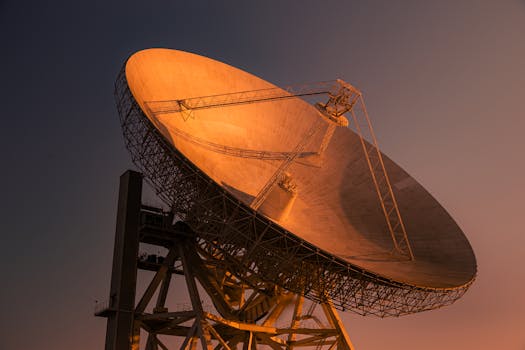Satellite Telecommunications 2023: Key Developments and What They Mean for the Industry

Satellite Telecommunications 2023: Key Developments and What They Mean for the Industry
Satellite Telecommunications 2023 is an exciting and rapidly evolving field, with numerous breakthroughs and innovations transforming the industry. The year 2023 has been marked by significant advancements in satellite technology, launch systems, and telecommunications services. In this article, we will delve into the key developments in satellite telecommunications and examine their impact on the industry.
The satellite telecommunications industry has experienced tremendous growth in recent years, driven by the increasing demand for global connectivity, remote sensing, and navigation services. The development of new satellite constellations, such as OneWeb and Starlink, has enabled the provision of high-speed, low-latency internet services to remote and underserved communities. These constellations comprise hundreds of satellites in low Earth orbit, offering unparalleled coverage and capacity.
Advances in Satellite Technology
One of the most significant developments in satellite telecommunications is the advancement of satellite technology. The introduction of new materials, designs, and manufacturing techniques has led to the creation of smaller, lighter, and more efficient satellites. For instance, the use of 3D printing has enabled the production of complex satellite components, reducing production time and costs. Additionally, the development of electric propulsion systems has improved satellite maneuverability and extended their lifespan.
The integration of artificial intelligence (AI) and machine learning (ML) in satellite systems has also enhanced their performance and capabilities. AI-powered satellites can now autonomously navigate, communicate, and perform tasks, reducing the need for human intervention. Furthermore, the use of ML algorithms has improved satellite data analysis, enabling the extraction of valuable insights and patterns from large datasets.
Launch Systems and Space Infrastructure
The development of reusable launch systems has revolutionized the satellite launch industry. Companies like SpaceX and Blue Origin have pioneered the use of reusable rockets, significantly reducing launch costs and increasing the frequency of launches. This has enabled the deployment of larger satellite constellations and facilitated the growth of the satellite telecommunications industry.
Space infrastructure, including ground stations, teleport stations, and satellite control centers, has also undergone significant upgrades. The development of advanced ground stations with phased array antennas has improved satellite communication capabilities, enabling faster data transfer rates and higher throughput. Moreover, the establishment of new satellite control centers has enhanced the management and operation of satellite constellations, ensuring seamless and efficient services.
Implications for the Industry
The key developments in satellite telecommunications have far-reaching implications for the industry. The increased availability of high-speed, low-latency internet services has opened up new opportunities for remote and underserved communities. Satellite-based connectivity has enabled the provision of critical services, such as telemedicine, online education, and emergency response, to these communities.
The growth of the satellite telecommunications industry has also created new opportunities for businesses and governments. Satellite-based services, such as Earth observation, navigation, and communication, have become essential for various industries, including agriculture, transportation, and finance. Furthermore, the development of new satellite constellations has encouraged investment in the industry, attracting new players and fostering innovation.



